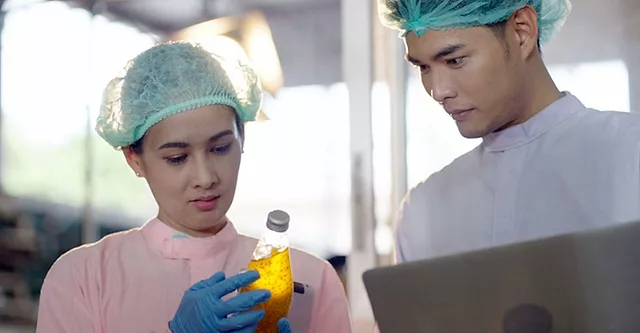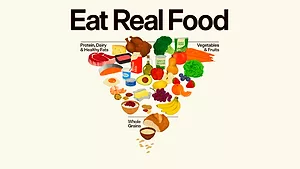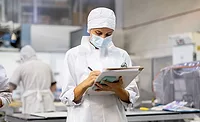Why a Paradigm Shift is Needed in Food Safety Auditing
February 6, 2023
Why a Paradigm Shift is Needed in Food Safety Auditing
February 6, 2023Video credit: kitiwan mesinsom/Creatas Video via Getty Images
"If you want to know the future, look at the past," Albert Einstein once said.
The purpose of auditing and the driving force behind its development are both linked to trust. This has been the case since auditing began. Professional auditors have always been relied upon to address the needs of those seeking assurance about the actions or performance of others. It is the same with food safety auditing. It all boils down to trust.
Here is our experience in the food industry.
In the late 1980s, retail auditors visited manufacturing facilities to determine whether their organization would purchase products. That was a critical point for both the auditors and the plants. They were looking for objective evidence to find confidence in the processes and products. Plants were doing everything they could to demonstrate that the auditors should trust them. Both the pressure and the stakes were high.
Numerous audits were performed because each customer had its own audit program and checklists. Furthermore, auditors were returning, regardless of the previous audit result. Being good did not affect the frequency with which manufacturers were audited. There was no risk-based audit approach, but manufacturing plants learned a lot, which prompted continuous improvement.
No certified food safety management was in place at the time; therefore, no concept of formal internal auditing, as we know it today, existed. There was, however, a willingness to ensure that plants were ready for the customer audit when they arrived. The same was valid for regulatory inspections. It was all about demonstrating adherence to requirements and learning from the experience to improve.
Audits and inspections were highly focused on compliance, with incredibly detailed checklists. As they differed from one customer to the next, it was challenging to design and maintain a system that would satisfy everyone. It was not impossible, however.
Adopting a management system approach has been a game changer. The late-1980s creation and subsequent development of the ISO 9000 family of standards positively impacted the food and beverage industry. These standards enabled food and beverage companies to incorporate their food safety requirements and those of their external stakeholders. It also provided them with a solid foundation for implementing an internal auditing program and verifying the system's effectiveness. Certification was primarily used to demonstrate trustworthiness to others. ISO 22000 came later. This auditable standard, first published in 2005, was outcome-focused, providing requirements for any organization in the food industry to help to improve overall food safety performance.
Looking for quick answers on food safety topics?
Try Ask FSM, our new smart AI search tool.
Ask FSM →
Looking for a reprint of this article?
From high-res PDFs to custom plaques, order your copy today!
High-profile food recalls in the late 1990s prompted a shift. In 2000, the Global Food Safety Initiative (GFSI) was established in response to major food safety issues and recalls. Consumer trust was eroding, and the food industry recognized the importance of working together to improve food safety. Audit fatigue was also a reality. Since food safety standards were not harmonized, redundant inspections and audits were the norm. This was both costly and time-consuming for all, including buyers and suppliers. The first draft of benchmarking requirements was published in 2001, and a pivotal moment occurred in 2007 when seven major retailers announced their acceptance of GFSI-benchmarked certification programs.
How are We Doing Today?
As we write this, the number of audits against GSFI-recognized programs is increasing, while multiple certification and customer audits in addition to GFSI are common. Undoubtedly, the coalition's and all stakeholders' efforts helped and will continue to help improve food safety. Still, the current food safety audit context appears to be heterogeneous, with room for improvement. Several types of audits coexist, each with its characteristics and value. They do sometimes overlap.
First-party audits are performed to self-assess the company's food safety management system and identify areas for improvement. These types of audits are carried out regularly to ensure food safety compliance and readiness for external audits. They are, by design, a fantastic opportunity to be honest and look in the mirror. Are they delivering the total value they could? These audits offer significant opportunity.
Second-party audits are performed by or on behalf of a company to other related businesses, such as suppliers. They are used, for example, to assess the suitability of a new or existing supplier based on the effectiveness of their food safety management systems. They typically use a specific set of food safety requirements from the company, which may differ from or be in addition to those implemented by the supplier. They appear to be gaining popularity.
External auditors from food safety auditing firms perform third-party audits to assess a company's food safety management system. This type of audit is frequently used to obtain certification. These audits numbers are still growing.
Where Do Opportunities Exist?
Food safety audits can provide enormous benefits when adequately designed and implemented, and the authors work with organizations that have done so. We also observe companies outside the food and beverage industry leading the way in making the most of their audits.
Consider the definition of value as the ratio of benefit to cost. In this case, first-party audits are well-positioned to maximize it, drive continuous improvement, and demonstrate that the food safety management system can be trusted. However, the authors' experience with first-party audits in the food and beverage industry indicates that opportunities exist to maximize their value. We discovered that some other sectors are doing much better in this regard.
Second-party audits are widely performed, and their importance is twofold. They are an essential component of a supplier management program that assists businesses in identifying and managing risks in their supply chain. They also promote continuous improvement at the supplier's sites when embedded correctly in the plan-do-check-act (PDCA) cycle on the receiving side. Companies that use second-party audits where they matter most in their supply chain reap significant benefits.
Organizations can demonstrate their ability to be trusted partners in the supply chain by demonstrating compliance through third-party audits and certification. It is where GFSI-recognized certification programs have played an essential role over the last two decades. Certification, however, appears to have turned into a "license to operate" in the food supply chain. While facilitating market acceptance, it must deliver the value it could and should, especially to mature businesses.
Despite these various types of audits, food safety issues continue to occur, risks remain undiscovered, and businesses struggle with repeating problems. The current auditing model is very retrospective. If the aviation industry's safety performance were comparable to that of the food industry, one would think twice before boarding a flight. How are they handling things?
In a typical year, approximately 130,000 flights per day take off and land without incident. Furthermore, long-term accident trends confirm that aviation is getting safer, and the safer aviation becomes, the more challenging it is to drive further improvement. There has been enormous safety progress in the last two decades thanks to effective aviation safety management systems, and auditing has played (and continues to play) a critical role.
Meanwhile, according to the Food and Agriculture Organization of the United Nations (FAO), an estimated 600 million people—almost one in ten people in the world—fall ill after eating contaminated food, and 420,000 die yearly. Despite the implementation of food safety management systems, audits, and certifications, national authorities reported more than double the number of recalls and border rejections in 2019 compared to 2009.
What can we learn about food safety auditing from the aviation industry?
In 2003, the International Air Transport Association (IATA) launched the IATA Operational Safety Audit (IOSA) program as an evaluation system designed to assess an airline's operational management and control systems. It was established to address the airline industry's need for globally harmonized operating safety standards. Before implementing IOSA, airlines evaluated one another's ability to provide safe operations. The audit standards were inconsistent and varied. Have you heard of anything like this before?
IOSA is an essential part of the industry's efforts to improve aviation safety, and it is now widely regarded as the gold standard in safety auditing. It has two primary objectives. The first goal is to enhance airline operational safety through a globally accepted audit program based on internationally harmonized standards. The second goal is to increase airline efficiency by eliminating redundant audits. It is all about continuous improvement—mission accomplishment in all aspects, with data to back it up.
In today's dynamic environment, IATA is evolving IOSA to focus on potential safety risks, rather than a "one-size-fits-all" approach. Introducing a risk-based approach will tailor the audit scope for each airline. The new method also includes a maturity assessment of the airline's safety critical systems and programs. IATA believes that focusing on relevant safety risks while maintaining a safety baseline will improve audit effectiveness and contribute to the aviation industry's goal of reducing accident rates.
When compared to the food industry, several characteristics are inspiring: one standard in safety auditing, the critical role of internal audits, audits and auditors being valued for their role in continuous improvement, a focus on root cause analysis and problem-solving, digitalization, and a move to risk-based and predictive approaches.
The frame of the audit processes, from preparation, execution, closure, and follow-up, is similar in the food and aviation industries. Still, the way, the depth, and the rigor at which each component is implemented make the difference. Our food and beverage industry requires a paradigm shift. It is about our food safety audits' why, how, and what. It is also about mindset, and this is critical given what is on the horizon.
What Challenges are On the Horizon?
As we stated at the outset of this article, we are facing unprecedented challenges. The number of drivers for those is quite significant. It is vital for food and beverage companies to understand the driving forces and their implications to take a position.
Climate change has a severe impact on many other aspects, including the safety of food. The change in temperature results in heavy rainfalls, hurricanes, and floods, altering the geographic distribution and nature of pathogens. Food companies are facing a higher number of outbreaks due to Salmonella spp., Campylobacter spp., Listeria spp., Escherichia coli, as well as mycotoxins, and research indicates a correlation with climate change.
The impact is not limited to biological contaminants. The soil is abused with harsh climate conditions, which impacts the type and concentration of chemical contaminants (e.g., heavy metals, pesticides). The nutritional content and stability of crops are being damaged while the world population continues to increase at a rapid pace, resulting in high demand for food. On the other hand, increased food supply is one of the primary sources of high greenhouse gas emissions, degraded ecosystems, and water scarcity. A substantial number of studies and efforts are underway to understand and control the impacts of climate change, keeping in mind that some are irreversible.
Globalization of the food supply chains also facilitates an increase in foodborne hazards as local incidents become international outbreaks. As one of the major drivers, globalization affects population movements and the development of new economic models, which then shape consumer preferences and food consumption patterns. Buying decisions, for example, are now made on a couple of additional criteria compared to the past. Consumers are looking for a healthier diet and considering sustainable options. Plant-based and cell-based production technologies are on the rise. As a result of using new supply sources for new processing technologies, new allergens (i.e., due to more frequent use of peas and legumes) and new pathogens are entering our catalog of food safety hazards. It is important to note that no clear regulatory frameworks exist for some of these novel foods, and debates are on the table as some people consider the new ways of production as an attack against the cultural element of food.
On the behavioral side, we see a clear shift from traditional shopping to online purchases, which accelerated more with the onset of the COVID-19 pandemic. Economic conditions and isolated living encouraged people to consume food more often at home, which changes how the food is produced, packed, and marketed—e.g., the increasing popularity of home-delivered meal kits. This results in additional complexities regarding food delivery and services while introducing new safety concerns such as cross-contamination, mislabeling, and authenticity in a space where regulations do not exist or governance is not as strong as for plant-manufactured food items.
Is the current setup of food safety auditing capable of dealing with these challenges on the horizon?
A Vision for the Future
Surely many of us know Eric Yuan, the entrepreneur behind Zoom Communications. Company origins can be traced back to 1987, when Eric's then-girlfriend and future wife was attending a university located more than ten hours away by train. He had the insight to envision a product and business that would facilitate video conferencing and provide user-friendly support. Eric Yuan indeed designed the future years ago with this foresight.
Food and beverage companies with a significant presence in the future will be those who plan from today. This will require an entire overhaul to anticipate future food safety risks and opportunities. We observe that the agricultural, pharmaceutical, and food industries are struggling with similar challenges, and we have been discussing those internally for some time, with limited progress. Recent changes and trends blurred the traditional borders between these industries, and end-to-end solutions are needed now more than ever. An integrated, cross-industrial approach is required to understand the scope and magnitude of the associated risks and the proper ways to manage them. Looking even further, and learning from other industries advanced in managing risks (such as aviation), would help a great deal. Benchmarking should be the buzzword for any possible occasion.
So far, the food and beverage industry has generated massive data about food safety performance, and audits have played a significant role in this. For some time, we have been observing a shift from compliance-based audits to risk-based audits in the pursuit of greater value. Areas for improvement remain, as incidents do happen. A change is needed from reactive to proactive in understanding how companies manage risks, what tools they use to predict the future, and what measures they put in place to manage those risks. The future of food safety auditing will be as good as we design it to be.
What are the Possible Scenarios for the Future?
We predict that the frame of the auditing process will remain the same, while the methods and approach to managing those processes will evolve. The new approach should consider the following aspects for the design:
- Taking a systematic, medium- to long-term view of the future (horizon scanning) and adapting the process and resources based on emerging hazards and risks (risk-based approach)
- Understanding the impact of globalization and economic conditions on the overall performance of food and beverage companies and their supply chains
- Navigating through changing government policies and regulations (and sometimes in the absence of those).
It is also crucial to look at different types of audits (first-party, second-party, and third-party audits coexist, and some overlaps exist) and the value they bring to the food and beverage business. A need may arise to redesign the entire auditing frame based on the outcome of this holistic evaluation. While doing so, the potential role and impact of the internal audits within the operating units (manufacturing plants, distribution centers, support offices) should also be considered.
During COVID-19, we have observed that some companies have identified the need to empower their internal auditors on manufacturing sites more, as they had to rely on the internal audit reports from the factories for some period. While conducting remote audits during this time, they narrowed the focus to the effectiveness of the internal audit program and the actions taken to address the issues. With this new understanding, they have changed their approach to train, coach, and develop internal auditors onsite.
A solid internal auditing program at the site level will help organizations identify immediate and future risks and opportunities faster and, in most cases, better when the bias is removed. Food and beverage companies should consider smart ways to strengthen the internal audit program execution at the field level. This is a critical change management and will require substantial effort for the cultural transformation.
When we talk about internal audits, it is almost impossible not to mention the corrective and preventive action program (CAPA). CAPA supports continuous improvement and is very much dependent on the organization's capability to identify the problems and the root causes of those issues. Our experience is that the CAPA programs are often not supported by a robust internal audit program, the organization is not able to identify the underlying root causes, or conflicting goals (e.g., water reduction goals vs. cleaning effectiveness) are making it difficult to choose the right option. In most cases, the result is repeat findings (in some cases, with a more significant magnitude) that lead to fatigue in the workforce and deteriorate the health of the food safety management system. Strengthening the CAPA follow-up as part of the overall auditing process and supporting operations to improve their skills in managing the program are key for future success.
Use of Technology
Emerging technologies will be critical in the future to support food safety auditing. Remote auditing technologies underwent a testing period during the pandemic, and some are effective when used as part of a hybrid approach. Artificial intelligence (AI) is presently and will be widely utilized to analyze data and trends to determine risks and opportunities. Machine learning, a subset of AI, is already assisting humans by generating educated and improved decisions and individualized suggestions based on the algorithms evaluated. Deep learning can examine unstructured data such as emails, social media, and reports. Information technology is being utilized to assist auditors for reporting purposes. Data mining is highly promoted for use in integrity check programs of certification bodies, as well as audit organizations. We should be expecting more to come, and mainly for the better.
In deploying these technologies, there remains a challenge that is often overlooked. Auditing involves a good deal of human judgment. Big data that the audit organizations and auditors will be analyzing can become overwhelming and create cognitive limitations. We do see a need for additional research to determine the optimal method for navigating through large data sets.
The Most Critical Element of Auditing
It is vital to remember that technology is only an enabler. The future of auditing is mostly about people. Having the right people, the right skills, and the right approach are key to success. How can we define the future of food safety auditors beyond industry-specific technical expertise?
We know that the food and beverage industry has been struggling to find the right talent for some time. The future is demanding even more. Future auditors of food safety should possess a high level of learning agility. This is essential for them to understand industry dynamics, the business they work for, strategies for the coming months and years, risks and opportunities that the future holds, and their role in supporting the management of those risks. Auditors must be skilled at communicating with individuals at various organizational levels. They must act like an advisor taking the auditee through the process to excel. They must be tech-savvy to utilize technological tools in the execution of audits.
The way we look at the auditing profession requires a nudge. We observe that food safety auditing roles are relatively junior in the internal audit organizations of food and beverage companies and are positioned as a "stepping stone" for more senior roles. In a way, audit organizations are creating a pool for future talent. This framing makes it difficult to attract more senior people in the organization to work as auditors in their next career step. The future of food safety auditing requires not only talent, but also the necessary experience to gauge the risks linked to business strategies. The young workforce of internal auditors is being asked to perform frequent, high-caliber audits and have the right discussions with the auditees, including some senior managers. This is a significant load to place on their young shoulders. The situation is not different for certification bodies, as there are always cost pressures on their services. The risk exists of auditors with insufficient experience making their way into the system due to tight margins in the market.
While designing the future of food safety auditing, a substantial amount of effort and thinking should go into the future role of the different stakeholders: auditees, business partners, boards of directors, and everyone else who receives the audit results and uses them for the greater good. They must roll up their sleeves to assist audit organizations and auditors in making the most out of it. This should be accomplished by proactively expressing their needs and expectations, helping the auditors and audit organizations make a better judgment, or deploying some of their critical resources in the service of the entire company through auditing. We see that most of the heat and pressure go to the audit organizations to increase the value of audits. The other side of the table also influences the quality of the outcome, and must be held accountable. While designing the roles and responsibilities, efforts should be made to change the perception of auditing from a source of cost and torture to a value generator.
We have a dream.
We hear someone say: "You can audit us at any time, and we'll be happy to show you why you can trust us. If you find issues we're not already taking care of, then we'll fix them forever and thank you."
How can we get there?
We believe it will happen only with the collaborative efforts of food and beverage industry experts. The first few steps are to:
- Understand and remove overlaps between different types of audits to make them contribute to one another
- Review the frame of the audit process and continuously look for opportunities inside and outside to simplify while increasing the value to the business
- Work with all stakeholders involved (i.e., universities, certification bodies, and peer companies) to develop the right skills for the auditors of the future.
We will get there, together.
Marc Cwikowski is Co-Founder at World of Auditing. He has worked for more than 30 years in the food and beverage industry and held various senior global leadership and executive positions in companies including Unilever, The Coca-Cola Company, and Danone. Former positions include audit process manager, director of quality and food safety strategy, director of supply chain capability development, food safety center director, and vice president for quality and food safety. Marc holds a master's degree in chemical and agricultural bioengineering from Agro-Bio Tech University at Gembloux. He holds extensive international experience in innovation, quality assurance, and food safety.
Tülay Kahraman is Co-Founder at World of Auditing. She has 24 years of experience working for food and beverage companies including The Coca-Cola Company, Mondelez International, and pladis Global. She has held global senior positions in which she led initiatives designing business processes, including innovation management and specification management. In her operational capacity, she has led auditing teams; regional research and development; quality; and environment, health, and safety. Tülay is a food engineer who also holds an M.B.A. degree. She combines her technical expertise with her knowledge of organizational psychology to design solutions to deliver a better learning experience.







